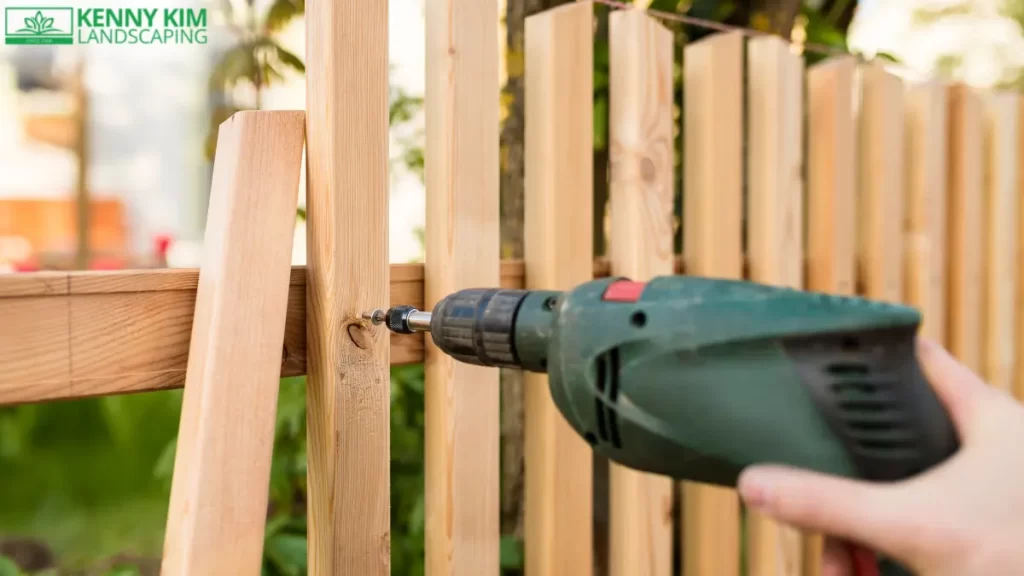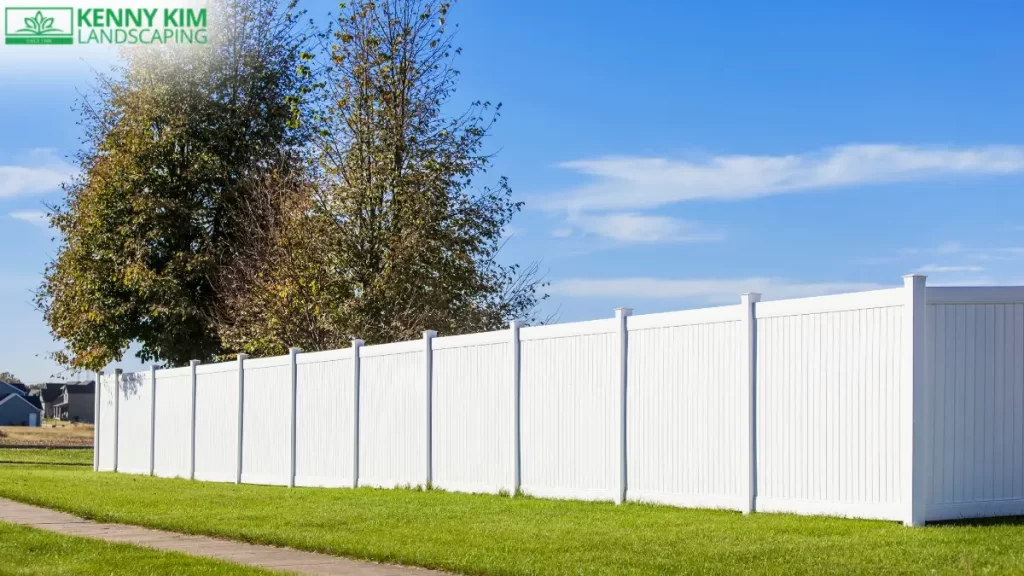If you’re considering installing a cyclone fence (also known as a chain link fence), you’re opting for a durable, cost-effective, and versatile fencing solution. Cyclone fences are popular for their ability to provide security and delineate property boundaries while allowing visibility.
In this guide, we’ll discuss the process of cyclone fence installation, ensuring you have all the information needed for a successful DIY project.
Materials And Tools Required
Before starting your cyclone fence installation, gather all necessary materials and tools. Having everything on hand will make the process smoother and more efficient.
Materials
- Cyclone fence fabric (chain link)
- Fence posts (metal or wood)
- Top rails
- Tension bars and bands
- Gate and gate hardware
- Tie wires
- Concrete mix
- Gravel
Tools
- Post hole digger or auger
- Shovel
- Level
- Measuring tape
- String line and stakes
- Wire cutters
- Wrenches
- Gloves
- Safety glasses
Preparation Steps
Proper preparation is key to a successful fence installation. Follow these steps to ensure your site is ready for the cyclone fence.
1. Site Preparation
Start by inspecting the area where you plan to install the fence. Remove any obstacles such as rocks, debris, or vegetation that could interfere with the installation process. It’s also important to check for any underground utilities before you start digging.
2. Measuring and Marking
Accurate measurements are crucial for a well-constructed fence. Use a measuring tape to determine the length of your fence line. Mark the positions of your fence posts using stakes and string. Ensure the corners and gate locations are clearly identified.
3. Digging Post Holes
With the site marked, begin digging the post holes. The depth of the holes will depend on the height of your fence and local regulations. Generally, holes should be about 2 to 3 feet deep. Ensure the holes are wide enough to accommodate the posts and concrete mix.
4. Installing Posts
Place the fence posts in the holes, making sure they are plumb and evenly spaced. Fill the holes with concrete mix, securing the posts in place. Allow the concrete to set according to the manufacturer’s instructions before proceeding.
5. Attaching the Top Rail
Once the posts are secure, attach the top rail to the posts. This will provide additional stability and support for the fence fabric. Use tension bands and bolts to connect the top rail to the posts.
Installation Steps
Installing the Posts
After the concrete has set and the posts are firmly in place, it’s time to proceed with the next steps in your cyclone fence installation.
1. Positioning and Aligning Posts
- Ensure all posts are aligned correctly using a string line stretched between the corner posts.
- Check each post for plumbness using a level and adjust as needed.
2. Attaching Tension Bars and Bands
- Attach tension bands to each post at regular intervals.
- Insert the tension bars through the end of the cyclone fence fabric.
- Secure the tension bars to the posts using the tension bands and bolts.
Attaching the Fence Fabric
Attaching the cyclone fence fabric is a crucial part of the installation process. Follow these steps to ensure it’s done correctly.
1. Unrolling the Fence Fabric
- Start by unrolling the fence fabric along the fence line.
- Ensure the fabric is positioned correctly and is free of tangles or twists.
2. Securing the Fabric to the Posts
- Begin at one end of the fence line. Attach the tension bar (which is already secured to the fence fabric) to the terminal post using tension bands.
- Gradually unroll the fence fabric, ensuring it remains taut and aligned with the top rail.
3. Securing the Fabric to Line Posts
- Use tie wires to secure the fence fabric to each line post.
- Space the tie wires evenly along the height of the post to ensure stability.
4. Cutting and Connecting Fence Sections
- If your fence line is longer than a single roll of fabric, cut the fabric as needed.
- Connect new sections using tie wires and ensure the transition is seamless.
Installing Gates and Other Components
Gates are essential for access and should be installed with care to ensure proper functionality.
1. Assembling the Gate Frame
- Assemble the gate frame according to the manufacturer’s instructions.
- Ensure the frame is square and secure all joints tightly.
2. Installing the Gate Posts
- Dig holes for the gate posts, ensuring they are deep enough to support the gate’s weight.
- Set the gate posts in concrete, making sure they are plumb and properly aligned.
3. Attaching the Gate
- Attach the gate to the posts using the provided hinges and hardware.
- Ensure the gate swings freely and latches securely.
Tensioning and Securing the Fence
Proper tensioning is vital for a secure and durable cyclone fence. Here’s how to do it:
1. Tensioning the Fence Fabric
- Use a fence stretcher or come-along tool to pull the fence fabric tight along the fence line.
- Ensure the fabric is uniformly tensioned to prevent sagging.
2. Securing the Fabric to the Top Rail
- Attach the fence fabric to the top rail using tie wires spaced every 12-18 inches.
- This will provide additional support and prevent the fabric from sagging.
3. Final Adjustments and Inspections
- Check the entire fence line for any loose ties or improperly secured sections.
- Make any necessary adjustments to ensure the fence is secure and visually appealing.

Troubleshooting Common Issues
Even with careful installation, issues can arise with your cyclone fence. Here are some common problems and how to fix them:
1. Fixing a Sagging Cyclone Fence
- Identify the Cause: Check for loose tie wires or improperly tensioned fabric.
- Solution: Tighten the tie wires and re-tension the fence fabric using a fence stretcher.
2. Repairing a Hole in the Cyclone Fence
- Identify the Damage: Locate the damaged section of the fence fabric.
- Solution: Cut out the damaged section and replace it with a new piece of fence fabric. Secure it with tie wires and ensure it is tensioned properly.
3. Addressing Leaning Posts
- Identify the Problem: Check if the posts are leaning due to loose soil or inadequate concrete.
- Solution: Re-dig the post holes, add gravel for drainage, and reset the posts with fresh concrete.
Maintenance Tips
Proper maintenance can extend the life of your cyclone fence and keep it looking great. Follow these tips for effective maintenance:
1. Regular Inspections
- Periodically inspect the fence for any signs of wear or damage.
- Check for loose ties, sagging fabric, and rust on metal components.
2. Cleaning the Fence
- Remove dirt and debris from the fence fabric using a hose or pressure washer.
- For stubborn stains, use a mild detergent and a soft brush.
3. Rust Prevention and Treatment
- Apply a rust-resistant coating to metal components to prevent corrosion.
- If rust appears, remove it with a wire brush and apply a rust-inhibiting primer and paint.
Cyclone Fence Privacy Options
While cyclone fences provide security and durability, they may lack privacy. Here are some options to enhance privacy:
1. Slats
- Installation: Insert slats vertically or diagonally through the fence fabric.
- Benefits: Increases privacy while adding a decorative touch.
2. Shade Cloth
- Installation: Attach shade cloth to the fence fabric using zip ties or clips.
- Benefits: Provides privacy and shade, and is available in various colors.
3. Vegetation
- Installation: Plant climbing plants or hedges along the fence line.
- Benefits: Adds natural beauty and privacy over time.
FAQs
How long does it take to install a cyclone fence?
The installation time varies based on the length of the fence and the number of helpers. Typically, it can take a weekend to complete a small to medium-sized fence.
What size post should I use for a cyclone fence?
Standard posts are usually 2 3/8 inches in diameter for terminal posts and 1 5/8 inches for line posts. The height of the posts depends on the height of the fence.
Do I need a permit to install a cyclone fence?
Permit requirements vary by location. Check with your local building authority to determine if a permit is needed.
How deep should I dig the post holes for a cyclone fence?
Post holes should be about 2 to 3 feet deep, depending on the height of the fence and local regulations.
Can I install a cyclone fence on uneven ground?
Yes, but you may need to adjust the post heights and tension the fabric carefully to ensure a consistent appearance.

